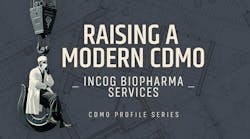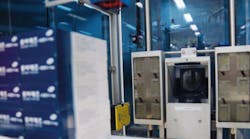Global demand for qualified pharma and biopharma CMOs continues to increase, driven in part by a growing patient population. The past 20 years has seen the rise of many emerging nations—among them Brazil, Russia, India and China, as well as South Korea, South Africa, Venezuela, Mexico and Argentina—whose populations require more and better drug products.
Another factor behind the rise of contract manufacturing has been changes in the structure and needs of drug companies of all sizes. Smaller companies with promising molecules in development don’t have the facilities for large-scale commercial production. They need CMOs for API and drug product manufacturing as well as packaging as they move from clinical to commercial operations. They seek support for their entire supply chain, including the licenses and approvals required from numerous regulatory agencies so that the product can be sold in many global markets.
Many have learned hard lessons. One U.S.-based company received EU approval for its product and selected a German CMO to manufacture and package it for seven individual markets. A year later, it decided to launch a branded generic version in the U.S. but ran into delays in obtaining FDA approval of the German facility.
Obviously, the company would have been better served by working with a CMO with both EMA and FDA regulatory licenses from the start.
Major Changes within Big Pharma
This article will look at some of the major factors driving the demand for and availability of global CMO facilities, starting with changes taking place within large manufacturers. These companies continue to shrink their number of worldwide API, manufacturing and packaging facilities for various key reasons:
- Internal initiatives for global plant rationalization to shrink the number of plants, reducing their overall asset base, global footprint, and manufacturing redundancy.
- Mergers and acquisitions, which are driving product consolidations and creating production redundancies in the combined manufacturing networks and supply chains, leading to asset divestitures and facility closings. In many cases, these plants are sold to CMOs and can include short- or long-term contracts to continue manufacturing existing products at those plants.
- The drive to expand business opportunities in growing and emerging markets, which requires developing regional partnerships which can include a need for “local content”—in regards to manufacturing, packaging, labeling or all three. This “local content” can provide benefits including lower costs, better market access, and reduced regulatory requirements.
- The need to implement global API, manufacturing and packaging strategies from a truly global perspective versus the more traditional “regional” strategy. Traditionally, large pharma companies have built their supply networks with duplicate product and manufacturing capabilities in the world’s major regions. This strategy is being replaced by one that identifies global centers of manufacturing excellence by type and dosage form. Many times only one or two locations are required to manufacture a certain type of product or dosage form for worldwide distribution. These manufacturing hubs have allowed global drug companies to reduce their number of plants significantly.
- The global shift from traditional oral solid dose to biologics is a trend that will continue for the foreseeable future and is contributing to large global pharma companies having excess capacity for oral solid dose manufacturing and packaging while lacking capacity on the biologics side.
- The change in strategy towards more horizontally integrated companies. Vertical integration was an important strategy years ago when there were limited options for qualified CMOs and packagers. This has change now that CMOs and plants are plentiful in most global regions.
- Product life cycle management issues related to the overall portfolio, where older established products are in sales decline or nearing patent expiration causing the originating manufacturer to:
- reduce the infrastructure needed to produce and support these products.
- sell the products to other manufacturers, including start-ups who need CMOs to produce and package.
- shut down API, manufacturing and packaging operations after product divestiture.
Changes at Medium-Sized and Small Manufacturers
Medium-sized global pharmaceutical companies who have grown from just one or two to several commercial products are in need of qualified CMOs to help launch and support growing sales in global markets. Medium-sized pharma would typically be characterized by multiple products, dosage forms, therapeutic areas and markets. These companies need CMOs that can support the growth and diversity of their product portfolio.
Finally, small global pharma and biopharma companies are also demanding more CMO capabilities. These companies include those that have:
- developed their first product and need to find a CMO to commercially manufacture it.
- acquired existing commercial products from large manufacturers and must find a qualified CMO to take over the API, manufacture and packaging responsibilities and help build a supply chain for the product.
- entered into a joint venture to manufacture and market a product in a new market.
Facility Locations and CMO Selection: API’s
Increased manufacturing capabilities in India and China have changed the sourcing options for many pharma manufacturers making decisions on where to make API for global products. Factors that have contributed to the rise of these two countries as API producers include better technical and scientific resources, improved manufacturing facilities, better access to and availability of approved material suppliers, improved quality and regulatory understanding and compliance, lower costs, improved infrastructure to support supply chain execution and better risk controls. Thus, many pharma companies have a manufacturing presence in one or both countries and have sourcing agreements or alliances to have API’s manufactured by companies located in these two countries.
Facility Locations and CMO Selection: Manufacturing and Packaging
For drug product manufacturing and packaging, there are other important factors to consider in addition to the ones listed for API’s. These include:
- manufacturing technology
- dosage form
- CMO site-specific expertise and experience
- location relative to where most of the sales will be
- regulatory licenses
- testing capabilities and requirements
- supply chain capabilities
- local content in the finish product requirements
- geopolitical issues.
In addition, continuous supply chain risk monitoring needs to be incorporated for early detection of changing environments. One pharma company selected a very capable CMO in Greece to manufacture and package a product sold in various global markets. For three years, there were no issues whatsoever and the decision seemed wise. More recently, however, as the country’s debt crisis has escalated, problems with transportation and logistics have arisen.
Summary
The selection of which CMO to partner with, and where facilities should be located, continues to become more complex, requiring small, medium, and large drug manufacturers to conduct extensive due diligence prior to forming a partnership. CMOs that present the lowest risk and that are most in tune with the global shifts and trends described above will ultimately be chosen.
About the Author
Bill Connell is Vice President, Supply Chain at Maxiom Group (www.maxiomgroup.com). He brings extensive skill and experience in supply chain strategy, design and business process development at both small and large clients. Bill has over 25 years of industry experience and consulting, most recently as Senior Vice President of Global Supply and Operations at Iroko Pharmaceuticals/Iroko Cardio. Bill has worked on projects including supply chain network design and optimization, contract manufacturer (CMO), third party logistics (3PL) and distributor selection. He received his MBA from the Indiana University of Pennsylvania and his BS from University of Maine. Bill can be reached at [email protected].





